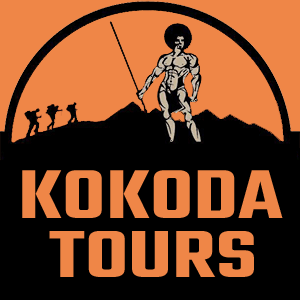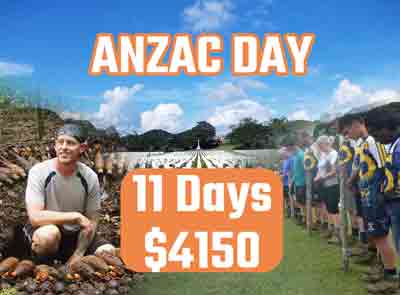Kokoda Campaign : A Look at the Australian Brigades Kokoda Track Campaign 1942 WW2 Timeline in Papua New Guinea
Introduction – Kokoda Track and Kokoda Campaign
Trekking Kokoda is not just a physical journey; it’s a historical odyssey through the challenging terrain that witnessed one of the pivotal chapters of World War II. The Kokoda Track, a trail traversing the rugged Owen Stanley Range in Papua New Guinea, holds the echoes of the fierce battles fought during the Kokoda Campaign in 1942. This detailed timeline sheds light on the significant events that unfolded along the Kokoda Track, offering trekkers a profound understanding of the wartime history etched into the very soil they will tread. A rough timeline of related kokoda battles is tabled below.
WW2 Timeline
| Battle Name | Date |
|---|---|
| Milne Bay Battle | 25 August 1942 – 7 September 1942 |
| Battle of Isurava | 26-30 August 1942 |
| Battle of Goodenough Island | 22 December 1942 |
| Efogi | 7-10 September 1942 |
| Slater’s Knoll | 14-15 November 1942 |
| Battle of Kokoda Station | July 1942 – November 1942 |
| Battle of Mount Egan | September 1942 |
| Ioribaiwa Ridge | September 1942 |
| Battle of Wau | 29 January 1942 – 4 February 1943 |
| Battle of Buna Gona | 16 November 1942 – 22 January 1943 |
| Battle of Sanananda | 21 November 1942 – 22 January 1943 |
| Battle of Oivi-Gorari | 4 December 1942 |
| Battle of the Komiatum Track | 26 December 1942 – 7 January 1943 |
| Mawase | 15 December 1942 – 21 January 1943 |
| Salamaua | March 1943 – September 1943 |
| Imita Ridge | September 1942 – November 1942 |
| Battle of Lae | 4-16 September 1943 |
| Nadzab | September 1943 |
| Battle of Mount Tambu | 16 July 1943 – 18 August 1943 |
| Battle of the Bismarck Sea | 2-4 March 1943 |
| Battle of Finschhafen | 22 September 1943 – 24 January 1944 |
| Battle of Dumpu | 22 October 1943 – 22 January 1944 |
| Battle of Sio | 22 October 1943 – 4 January 1944 |
| Battle of Wareo | 11-12 September 1943 |
| Battle of Sattelberg | 17-25 November 1943 |
| Scarlet Beach | November 1943 |
| Battle of Mubo | 22 April 1943 – 14 January 1944 |
| Bobdubi Ridge | 18-20 March 1943 |
July 1942: Japanese Advance Towards Kokoda
The Kokoda Campaign began in July 1942 when Japanese forces, aiming to capture Port Moresby, advanced towards Kokoda. The Australian troops of the 39th Battalion were faced with a formidable challenge as they confronted the Japanese along the Kokoda Track.
Battle of Brigade Hill – August 1942
As the Australians entrenched themselves in defensive positions, the Battle of Brigade Hill unfolded in August 1942. The 25th Brigade, comprising brave Australian soldiers, resisted the Japanese attack, marking a crucial phase in the campaign.
September 1942: Withdrawal and Battle of Ioribaiwa
Amidst fierce battles, the Australians faced a strategic withdrawal along the Kokoda Track in September 1942. The confrontation at Ioribaiwa became a turning point, as the Australian forces regrouped, preparing for the challenges that lay ahead.
Battle of Eora Creek and the Milne Bay Connection
The Battle of Eora Creek added another layer to the campaign. Simultaneously, the Australian forces achieved a significant victory at Milne Bay, disrupting the Japanese advance and maintaining a crucial supply line.
October 1942: Kokoda Village and Japanese Withdrawal
In October 1942, the Australians, determined to reclaim Kokoda Village, engaged in fierce battles. The Japanese forces, facing difficulties along the Kokoda Trail, eventually withdrew, marking a significant shift in the campaign.
November 1942: Australian Advance on Port Moresby and Battle of the Beachheads
As the Australians advanced towards Port Moresby, the Battle of the Beachheads intensified the conflict. The rugged terrain and challenging weather conditions added to the already arduous nature of the campaign.
December 1942: Victory on the Kokoda Trail
December witnessed a pivotal moment in the campaign as the Australians secured a hard-fought victory on the Kokoda Trail. The tenacity of the Australian troops, combined with strategic manoeuvres, contributed to the turning tide in the Pacific War.
1943: Recapture of Kokoda and Beyond
The recapture of Kokoda marked the beginning of the end for the Japanese forces in the region. The Australians, supported by Allied forces, continued their march across the Kokoda Trail, reclaiming territory previously lost.
Legacy and Honours of the Kokoda Track Campaign of World War 2
The campaign saw acts of extraordinary bravery, with individuals like Bruce Kingsbury posthumously awarded the Victoria Cross. Brigadier Arnold Potts and others played pivotal roles in securing the Kokoda airfield, contributing to the overall success of the campaign.
FAQ’s
Q: What is the Kokoda Campaign?
A: The Kokoda Campaign refers to the series of battles fought between Japanese and Australian forces in Papua New Guinea during World War II. It is also known as the Kokoda Track Campaign.
Q: What is the significance of Imita Ridge in the campaign?
A: Imita Ridge is significant as it marked the furthest point of the Japanese advance along the Kokoda Track. It also became the site of a major defensive position for the Australian forces.
Q: Who was involved in the campaign?
A: The campaign involved Japanese troops, led by General Douglas MacArthur, and Australian forces, including the 21st Brigade and infantry battalions.
Q: What were the major battles during the campaign?
A: The major battles included the Battle of the Coral Sea, Battle of Milne Bay, Battle of the Beacheads, and the battles at Buna and Gona.
Q: What was the significance of the Kokoda Plateau in the campaign timeline?
A: The Kokoda Plateau was a strategic location that both the Japanese and Australian forces sought to control, leading to intense fighting and a shifting frontline.
Q: What role did the village of Kokoda play in the campaign?
A: The village of Kokoda was a key location along the Kokoda Track and changed hands multiple times, becoming a focal point in the campaign’s timeline.
Q: How did the campaign end?
A: The campaign ended with the Japanese forces withdrawing along the track, leaving the Australian forces in control and effectively halting the Japanese advance in Papua New Guinea.
Q: What impact did the campaign have on the war in the Pacific?
A: The campaign marked a significant turning point in the war, halting the Japanese advance and boosting Australian morale. It also prevented the Japanese from capturing Port Moresby and gaining a strategic advantage.
Q: What were the challenges faced by soldiers on the Kokoda Track?
A: The soldiers faced gruelling conditions, rugged terrain, disease, and brutal combat, making the campaign one of the most harrowing experiences of the war for both Australian and Japanese forces.
Q: What were the long-term effects of the campaign?
A: The campaign had lasting effects on both the Australian and Japanese forces, with many lives lost, prisoners of war taken, and a profound impact on the war’s outcome in the Pacific theater.
Conclusion
As trekkers embark on the Kokoda Trail, they follow in the footsteps of heroes who faced unimaginable challenges. The timeline of the campaign serves as a poignant reminder of the sacrifices made along this path through the enemy territory. The recollections of battles, victories, and defeats etched into the very landscape create a profound and humbling experience for those trekking Kokoda.




